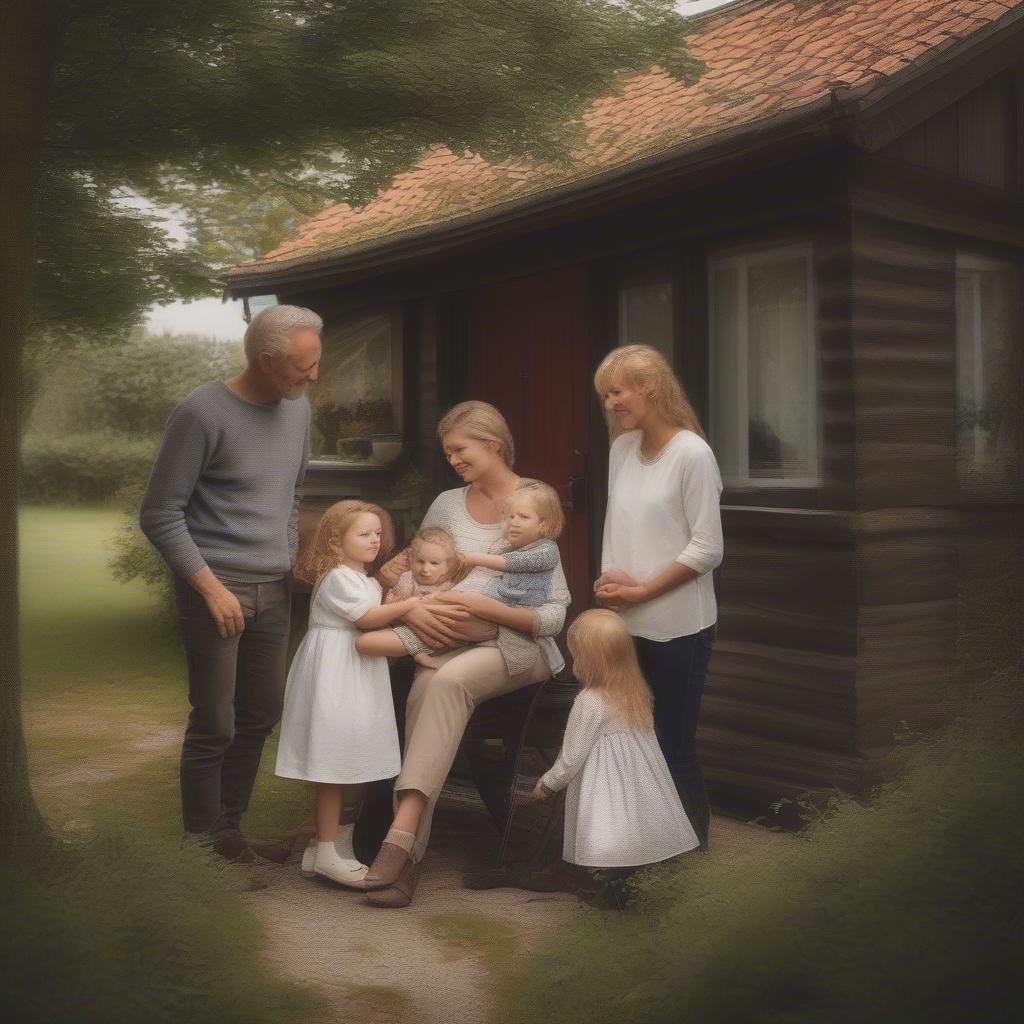Learning how to say “I love you” in Danish is a beautiful way to connect with Danish culture and express your affection to someone special. Whether you’re planning a trip to Denmark, have Danish heritage, or simply want to impress someone who speaks the language, this guide will teach you everything you need to know.
Declaring Your Love in Danish: Jeg elsker dig
The most common and direct way to say “I love you” in Danish is “Jeg elsker dig” (pronounced roughly as “yigh ell-sker die”). “Jeg” means “I,” “elsker” means “love,” and “dig” means “you.” This phrase is suitable for expressing romantic love to a partner, family member, or close friend.
 Couple saying I love you in Danish
Couple saying I love you in Danish
Other Ways to Express Affection in Danish
While “Jeg elsker dig” is the most straightforward translation, there are other ways to express affection in Danish, depending on the context and your relationship with the person.
Expressing Love to Family and Friends
For family members and close friends, you can also use “Jeg holder af dig” (pronounced roughly as “yigh holler ay die”). This translates to “I care for you” or “I’m fond of you.” It expresses a deep affection but is less intense than “Jeg elsker dig.”
Romantic Expressions Beyond “I Love You”
If you want to express your romantic feelings beyond a simple “I love you,” you can try phrases like:
- Du er mit et og alt: (You are my everything)
- Jeg er vild med dig: (I’m crazy about you)
- Jeg er forelsket i dig: (I’m in love with you)
 Danish family hugging
Danish family hugging
Pronunciation Tips for “Jeg elsker dig”
While the phonetic pronunciation given above is a helpful starting point, mastering the Danish pronunciation of “Jeg elsker dig” takes practice. The “g” in “Jeg” is often silent or pronounced very softly. The “e” in “elsker” is pronounced like the “e” in “bed.” The “dig” is pronounced with a soft “d” and a short “i” sound, similar to “dig” in English.
Using Online Resources for Pronunciation
Numerous online resources, such as Forvo and YouTube, can help you hear native Danish speakers pronounce “Jeg elsker dig” and other Danish phrases. Listening to and mimicking native speakers is a valuable tool for improving your pronunciation.
Cultural Considerations When Expressing Love in Danish
Danes are generally more reserved than some other cultures when it comes to expressing strong emotions publicly. While saying “Jeg elsker dig” is perfectly acceptable within close relationships, it’s not typically used casually or with acquaintances.
 Danish friends laughing together
Danish friends laughing together
How to Respond When Someone Says “Jeg elsker dig”
If someone tells you “Jeg elsker dig,” the most natural response is to reciprocate their feelings if you share them. You can simply say “Jeg elsker dig også” (I love you too). If you don’t share the same romantic feelings, you can express your appreciation for their affection while being honest about your own feelings.
Conclusion
Learning how to say “I love you” in Danish, “Jeg elsker dig”, is a wonderful way to express your deep affection to someone special. Understanding the nuances of Danish expressions of love allows for a more genuine and meaningful connection. So, whether you’re whispering sweet nothings or expressing your love to family, now you have the tools to do so in beautiful Danish.
FAQ
- What is the most common way to say “I love you” in Danish? Jeg elsker dig.
- How do you pronounce “Jeg elsker dig”? Roughly as “yigh ell-sker die”.
- Is there a less intense way to express affection in Danish? Yes, “Jeg holder af dig” means “I care for you.”
- What are some other romantic phrases in Danish? “Du er mit et og alt” (You are my everything) or “Jeg er vild med dig” (I’m crazy about you).
- Are Danes open about expressing love publicly? Danes tend to be more reserved with public displays of affection compared to some other cultures.
- How do I respond if someone says “Jeg elsker dig”? If you share their feelings, reply with “Jeg elsker dig også” (I love you too).
- Where can I practice my Danish pronunciation? Online resources like Forvo and YouTube are helpful tools.
Scenarios:
-
Scenario 1: You’re visiting your Danish partner’s family for the first time and want to express your appreciation for their hospitality. You could say, “Jeg holder af jer” (I care for you all), a slightly less intense but still warm expression of affection.
-
Scenario 2: You want to surprise your Danish spouse with a romantic gesture. Whispering “Du er mit et og alt” (You are my everything) in their ear is sure to melt their heart.
-
Scenario 3: You’re writing a love letter to your Danish pen pal. Sprinkling phrases like “Jeg er forelsket i dig” (I’m in love with you) throughout your letter will convey the depth of your feelings.
Further Exploration on DaiDuongTranhBa
Check out these other articles on our website for more insights on love and relationships:
- Navigating Cultural Differences in Relationships
- Expressing Your Feelings Effectively
Contact us at contact@daiduongtranhba.com or Michigan Ave, Suite 3100, Chicago, IL 60611, USA. We have a 24/7 customer service team.

